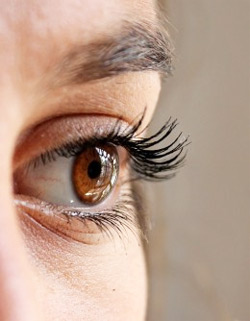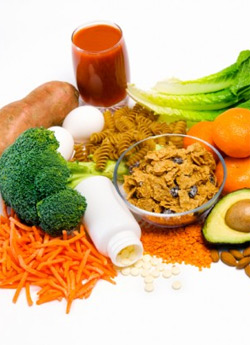|
|
Elevated Homocysteine harmful for eyes
 Homocysteine is an amino acid in the blood. It
appears to be a nerve and vessel toxin, promoting mortality,
cardiovascular
disease (CVD), stroke, Alzheimer's Disease,
birth defects, recurrent
pregnancy
loss, and eye disorders. Homocysteine is an amino acid in the blood. It
appears to be a nerve and vessel toxin, promoting mortality,
cardiovascular
disease (CVD), stroke, Alzheimer's Disease,
birth defects, recurrent
pregnancy
loss, and eye disorders.
It has been recently reported by the researchers at the Medical College of
Georgia. that high levels of an amino acid called homocysteine could harm the
eyes. They suspect that homocysteine - already believed to contribute to heart
attack, stroke and dementia - likely helps cause retinal damage and vision
loss. Preliminary evidence suggests that elevated homocysteine levels damage
the extensive blood vessel and neuronal network of the retina.
Normal serum homocysteine levels are from 2.2 to 13.2 �mol/l. Levels of
homocysteine in typical Western populations are about 12 �mol/l. Although this
is "normal," it is not necessarily healthy.
Keeping homocysteine at levels associated with lower rates of disease
requires both adequate
B12 and
folate (also known as
folic acid)
status. Low vitamin
B6 status can also cause elevated homocysteine in some
people.
Lifestyle factors which increase homocysteine levels include:
-
Diet - high alcohol intake and coffee consumption reduce the absorption of
vitamins
-
-
Lack of physical exercise and excessive
stress
-
-
Drugs and certain diseases also influence homocysteine metabolism.
If several of these factors are combined, their impact may be substantial.
Tied to folic acid
 Methionine is an essential amino acid obtained from protein in the diet. Some methionine is turned into homocysteine. The body turns much of this homocysteine
back into methionine with the help of vitamin B12. If someone is B12-deficient,
homocysteine levels will increase because this reaction cannot take place. Methionine is an essential amino acid obtained from protein in the diet. Some methionine is turned into homocysteine. The body turns much of this homocysteine
back into methionine with the help of vitamin B12. If someone is B12-deficient,
homocysteine levels will increase because this reaction cannot take place.
This is a problem for many people, because they don't eat enough folate-rich
fruits, vegetables and grains. People need about 400 micrograms of folate daily.
Pregnant women as well as those trying to become pregnant need at least double
that.
Plant Sources of Folate
Food
|
amount
|
�g
|
cooked lentils
|
1/2 Cup
|
179
|
cooked black beans
|
1/2 Cup
|
128
|
romaine lettuce
|
1 1/2 Cup
|
114
|
orange juice
|
1 Cup
|
109
|
cooked spinach
|
1/2 Cup
|
103
|
canned refried beans
|
1/2 Cup
|
106
|
cooked garbanzo beans
(aka chickpeas)
|
1/2 Cup
|
80
|
cooked navy beans
|
1/2 Cup
|
82
|
cooked broccoli
|
1 Cup
|
78
|
sunflower seeds
|
1/4 Cup
|
76
|
cooked pinto beans
|
1/2 Cup
|
72
|
cooked kidney beans
|
1/2 Cup
|
63
|
RDA for folate is 400 �g for people over age 13.
Folate and vitamin B12 convert homocysteine to methionine, an amino acid that
plays a vital role in protein synthesis. When this conversion fails to occur,
elevated homocysteine levels interfere with the folding and structure of
collagen, a component of bone, tissue and blood vessel walls.
Related Links
|
|
|
|
|









